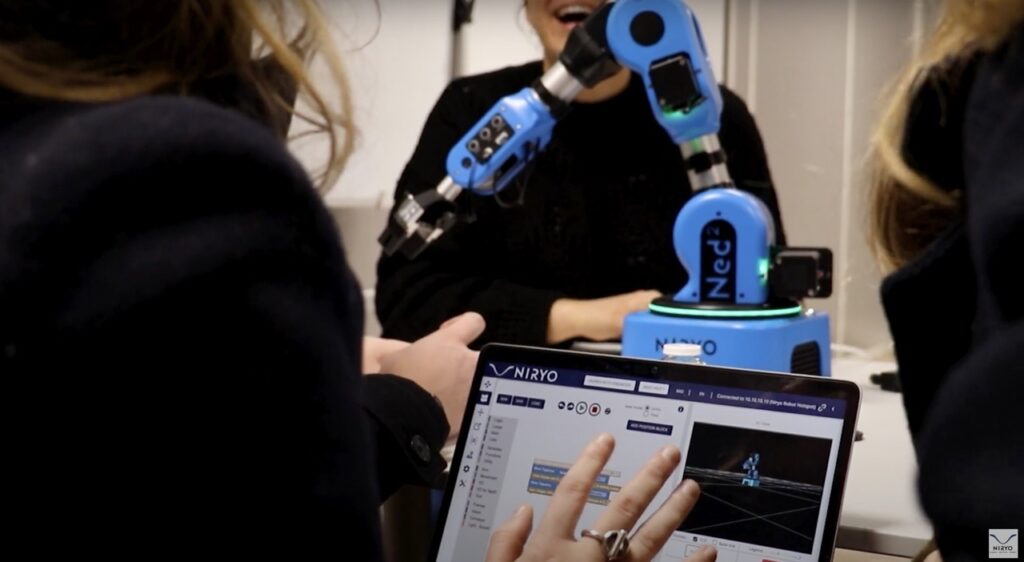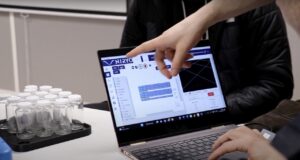Robotics has become an increasingly popular field in recent years, with a growing number of individuals and companies exploring the potential of this exciting technology.
As the field continues to evolve, it is important for developers to have access to tools that make it easier to create and program robots. One such tool that has gained popularity in recent years is Blockly, a visual programming language that can be used to program robots.
In this article, we will explore the benefits of using Blockly in robotics, particularly in comparison to the popular programming language Python.
First, what is Blockly?
Blockly is a visual programming language that was developed by Google. It allows users to create programs by dragging and dropping blocks of code.
This visual approach to programming makes it much easier for beginners to understand and learn programming concepts. Blockly is particularly well-suited to robotics, as it enables developers to create complex programs without needing to write codes from scratch.
1. No coding experience, no problem!
One of the key advantages of using Blockly in robotics is its simplicity. Compared to traditional programming languages like Python, which require a minimum amount of coding knowledge, Blockly allows users to create complex programs with ease.
This makes it an ideal choice for beginners, as well as for those who may not have extensive programming experience.
2. Flexible robot programming with blocks
Another advantage of using Blockly in robotics is its flexibility. The visual nature of Blockly means that it can be used to program a wide range of robots, from simple educational robots to more advanced industrial robots.
This makes it a highly versatile tool that can be used across a range of applications, such as prototyping or vision.
Blockly combined with our save trajectory feature, available on Ned2.
3. Bugs are highlighted
In addition to its simplicity and flexibility, Blockly also offers a number of other benefits that make it well-suited to robotics. For example, Blockly makes it easy to debug code, as errors are immediately visible within the visual interface.
It also enables developers to work collaboratively, as code can be shared and edited within the platform.
4. Open-sourceness, a valuable asset
In programming, open-source has become a critical criteria. Blockly is designed to be accessible and easy to use, making it an ideal choice for those who are just starting out in robotics. It also offers a visual interface that can help developers better understand the logic behind their programs.
This can be particularly useful for those who may struggle with abstract concepts.
So what to choose? Python or Blockly?
Despite its many advantages, some may argue that Python is a better choice for programming robots. After all, Python is a widely-used programming language that is well-suited to a wide range of applications.
However, while Python (see our documentation here) is a powerful programming language, it can also be complex and difficult to learn depending on the user’s level of programming knowledge. This can be a barrier for beginners, particularly those who may not have a strong background in programming.
In other words, if you wish to dive deeper into the programming world, Python will be your go to language. On the other hand, Blockly will be used by a beginner who doesn’t necessarily need to access deep knowledge in robotics.
At Niryo, we’ve decided to choose both! Regardless of your programming knowledge or technical level, you’ll be able to either program your robot with Python, and discover the roots of programming, or you can simply access our platform: Niryo Studio, based on Blockly. By doing so, you can easily add blocks to your Blockly interface and connect it to your robot, and therefore program your robot without any coding.
We should note that this particular advantage concerns companies that wish to automate their processes but don’t have the technical expertise to use advanced programming to deploy collaborative robots to their production line.
That’s where Blockly comes to the rescue!
To sum up, while Python is a powerful programming language that is widely-used in robotics, Blockly offers a number of advantages that make it an appealing choice for developers. Its simplicity, flexibility, and visual interface make it an ideal tool for beginners and experts alike.
As robotics continues to evolve, tools like Blockly will play an increasingly important role in helping developers to create and program robots.
So are you team Blockly or team Python?













